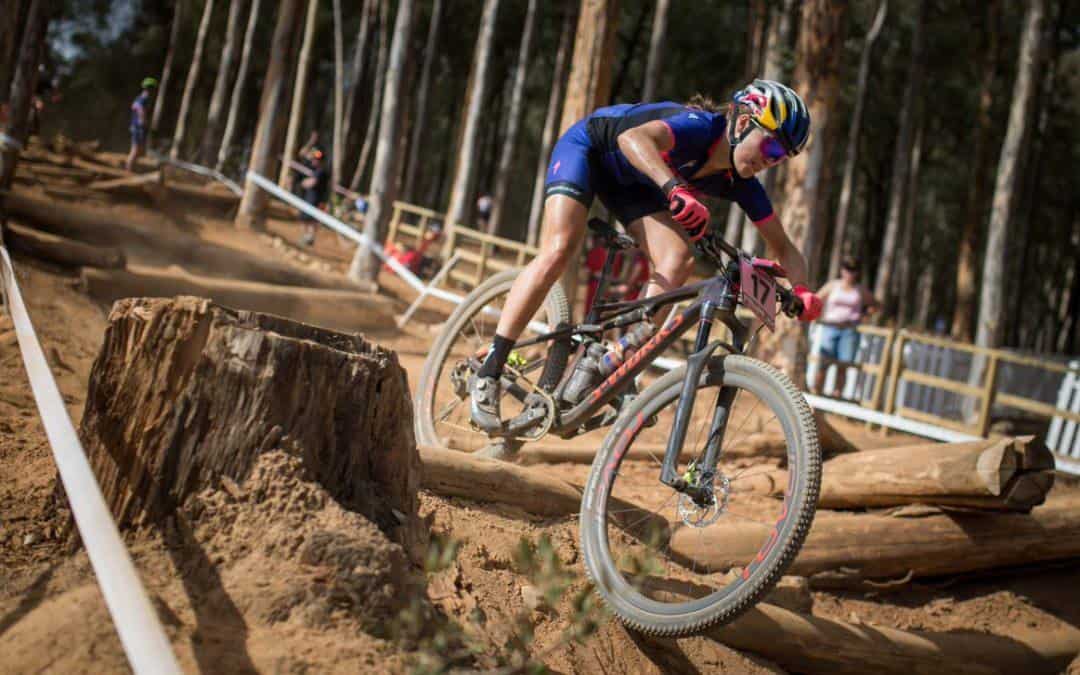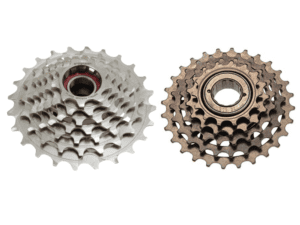You may be wondering, what is cross-country mountain biking? It is a type of mountain bike racing that’s designed for travel over moderate to difficult terrain.
There are three main types of cross-country bike racing, which include downhill mountain biking, cross-country mountain biking, and single-track or XC races.
Cross-Country Mountain Biking Requirements
Cross-country riders’ and trail riders’ requirements include good physical condition, aerodynamic speed skills in the bike, and a strong psychological capacity.
This biking is a form of off-road cycling that covers long distances over rough terrain, often using maintained or semi-maintained trails. Cross-country mountain biking is a sport of endurance rather than speed.
While governed by many of the World Cycling Union (UCI) rules and regulations that apply to other cycling disciplines, cross-country mountain biking also includes additional voluntary standards/rules that are agreed upon by worldwide cross-mountain bike races organizations including the International Mountain Bicycling Association (IMBA).
Cross-country mountain bike racing at the highest levels is very demanding physically and requires excellent fitness.
Types of bikes involved in cross-country mountain bike racing
Downhill bikes: are lightweight, rigid frames, with less suspension travel, and components designed to transfer pedal power to the ground efficiently.
Depending on the riders’ weight and riding objectives, bikes are classified as light, medium-weight, or heavy.
These bikes are built for speed and perform high-speed descents on rough terrain with high amounts of air time during a downhill race.
Cross-country bikes: also known as all-mountain/Enduro mountain bikes like classic mountain bikes or trail mountain bikes.
These types of trail riders have a similar geometry compared to their downhill counterparts but with more suspension travel and less weight making them more suitable for cross-country racing over varying terrains like technical terrain and longer distances than downhill racing while still having enough performance to be used in some downhill-only events.
Professional and Amateur Level Cross Country Mountain Biking
There are multiple races that are included in cross-country mountain bike racing. They involve using some form of a bicycle and can be held on either amateur or professional levels.
This type of biking is an adventure sport that follows the tracks in the woods for a straight shot as opposed to other forms of cycling that follow specific trails and roads with turns and switchbacks.
Mountain bikers who take part in cross-country mountain biking races are called racers.
Riding style varies as some racers aim to be faster on a trail than other racers by drafting or riding in packs.
Sports racers (also known as “technical specialists”) will plan for a technical course with plenty of roots, rocks, and other technical features, while more recreational riders tend to pick smoother trails with fewer potentially dangerous obstacles.
Cross-country races are often held under competition rules that ensure fairness for all competitors.
Mountain biking is a current activity of a sports enthusiast and is a passion and hobby. Cross Country mountain biking, also known as “XCM” refers to the sport itself.
Most XCM races take place on trails that are typically parallel to the roads. Cross-country mountain biking is also referred to as long-distance mountain biking or long-distance cycling.
Cross-country mountain biking offers an opportunity for fans and enthusiasts from around these areas to compete in the sport longer than in other categories of riding such as Freeride or downhill racing.
XC Racing
Many XCM races are multiple days with multiple checkpoints along each leg of the race between different checkpoints, similar to multi-stage bicycle tours in some respects.
XC is a very popular event for cross-country mountain biking because it takes place on smooth fire roads, and it’s a great way to ride on a bike.
XC riders use different XC bikes than free riders do. Cross-country mountain bikes are made for smooth singletrack and for riding on paved roads. Entry into an XC race is easy, yet winning the race can be extremely difficult.
In XC racing, riders use multiple gears. Shifting gears are used to pass other competitors during various parts of the course that have been marked as gear changes by the course marshals.
XC Racing Requirements
The bare minimum qualification to participate in an XC race is to be a licensed rider. Licenses are available for both the military and civilians.
To get a license, a rider must pass the Military Cycling Proficiency Test (COPT) or the civilian cycling proficiency test (CPT).
The purpose of this test is to ensure that riders have mastered basic bike riding skills before entering any cross-country event.
The course consists of laps on paved fire roads surrounded by trees and picnic tables. There are only one or two exceptions in which the course travels over a bridge and passes through small villages.
The course is very flat but does vary slightly from year to year based on trail maintenance work done before each season begins.
The race is one lap – you start in the parking lot and then complete it again. The time limit is 3 hours – you will not be allowed to continue on the course after that time so make sure your bike is running well at the start of the race
This race is rugged, tough, and challenging. It will test both your physical ability and mental toughness. It’s not uncommon for racers to spend considerable time in remote parts of the course scouting for obstacles. In some cases, there may be multiple trails that lead to different obstacles on a single leg or lap.
Cross-country mountain biking necessities such as inches in wheel sizes, the right XC helmets, geometry, grips, pedals, bike frame sizes, and cleats are all needed to compete. A helmet is specified by the type of mountain bike that you will be riding.
The best cross-country mountain bikes are those that have a few wheel sizes since there are multiple races to compete in and each needs a different preferred wheel size. The better the shoe and cleat combo the faster you can go down a trail.
Conclusion
Overall, cross-country racing is very popular, and XCM is one of the most respected disciplines in the sport.
The benefits of XCM are completely different than those of downhill or freeride – it is much easier to learn how to ride XC bikes and you will be more in tune with your bike handling and performance.
This precise, technical discipline won’t require as much strength training as mountain biking will, and all you need is a bicycle that has a full-suspension fork.
Frequently, multiple trails go together to create a leg or lap. This multiple-trail feature becomes difficult for riders attempting to chart their way through the course because they often use other trails besides what they’re supposed to.
I hope this post answered the question of what cross-country biking is for you. It’s now time to go race. All the best.





